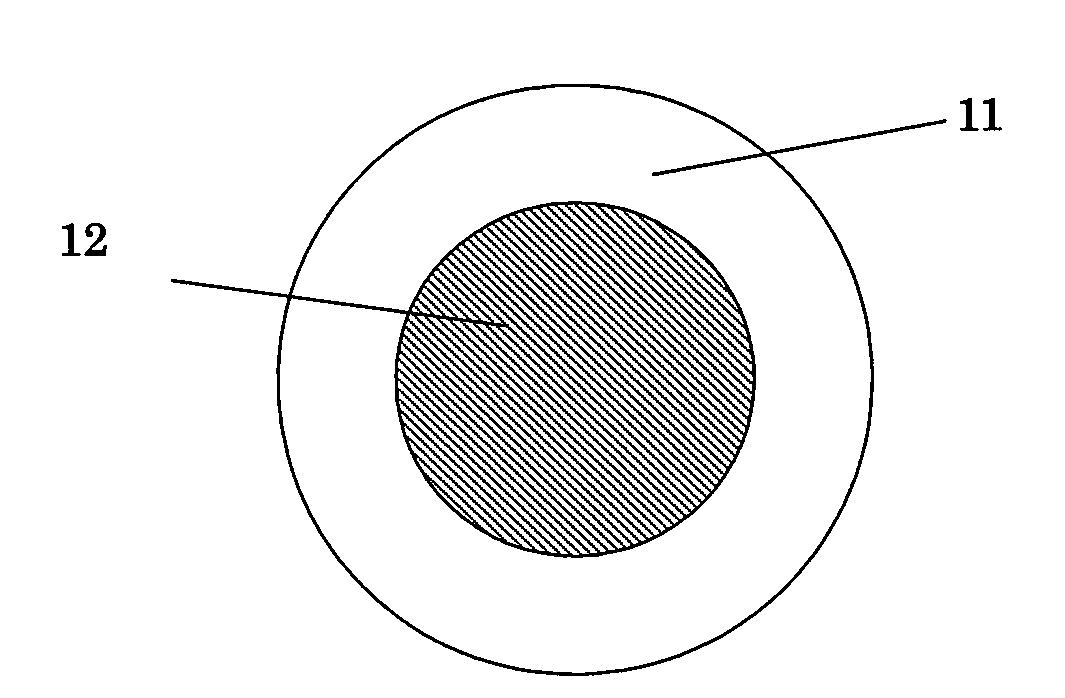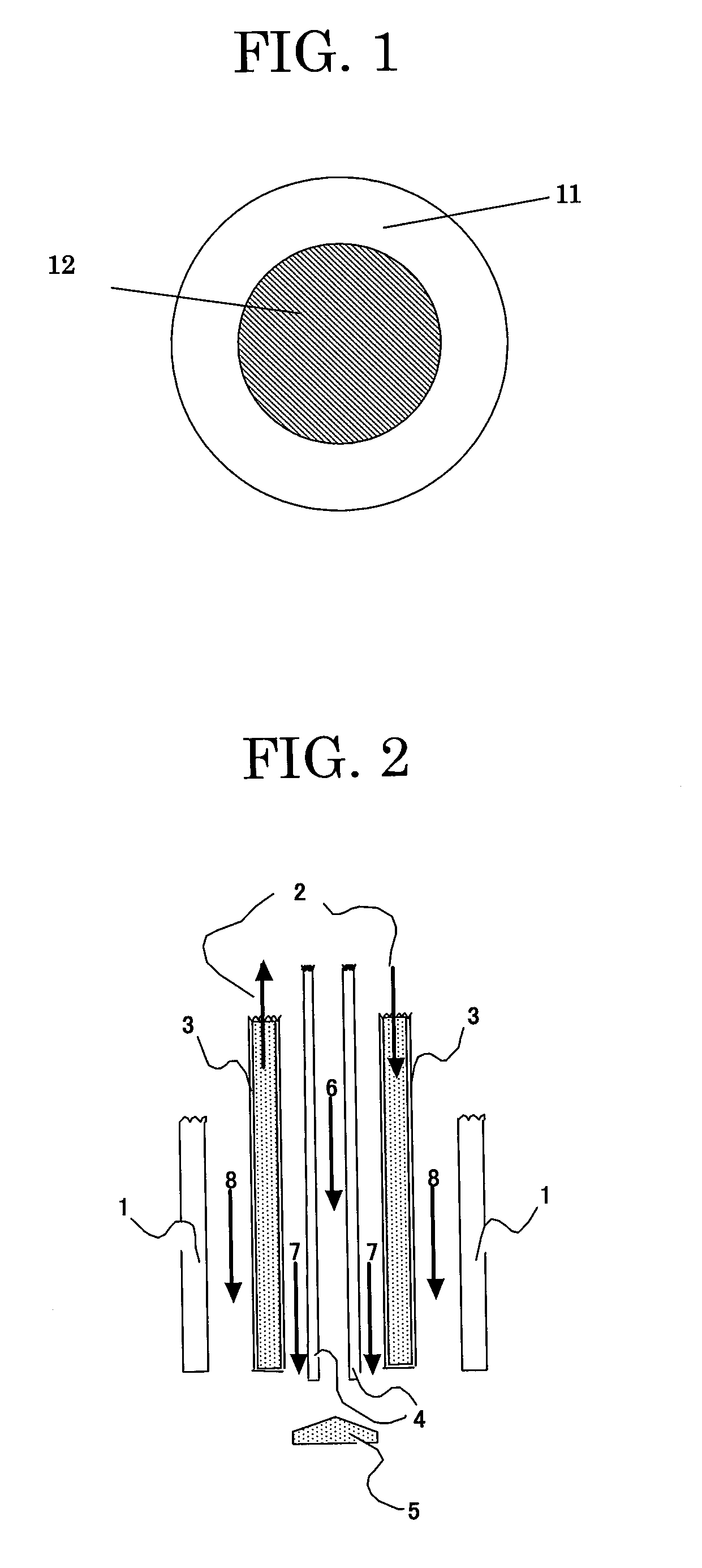Heat-expandable microspheres, method for producing the same, and application thereof
a microsphere and expansion method technology, applied in the field of expansion microspheres, can solve the problems of poor thermal stability, insufficient expansion ratio of microcapsules, and inability to prefer ascorbic acids, and achieve excellent durability, high expansion ratio, and high expansion ratio
- Summary
- Abstract
- Description
- Claims
- Application Information
AI Technical Summary
Benefits of technology
Problems solved by technology
Method used
Image
Examples
example
[0184]The present invention is described specifically with the following examples, though the present invention is not restricted within the scope of those examples.
[0185]The properties of the heat-expandable microspheres and hollow particulates produced in the following Examples and Comparative examples were measured and their performance was further evaluated in the procedure described below.
[0186][Determination of Average Particle Size and Particle Size Distribution]
[0187]A laser diffraction particle size analyzer (HEROS & RODOS, manufactured by SYMPATEC) was employed as the device for the determination. Microspheres were analyzed in dry system with a dry dispersion unit, where the dispersion pressure was controlled at 5.0 bar and the degree of vacuum was controlled at 5.0 mbar. The median particle size (D50 value) was determined as an average particle size.
[0188][Determination of Moisture Content of Heat-Expandable Microspheres]
[0189]The moisture content was determined with a Ka...
example a1
[0224]An aqueous dispersing medium was prepared by adding 100 g of sodium chloride, 80 g of colloidal silica containing 20 weight percent of silica as effective ingredient, 0.1 g of polyvinylpyrolidone, and 0.5 g of 1-% aqueous solution of ethylenediaminetetraacetic acid tetrasodium salt to 600 g of deionized water, and controlling the pH of the mixture at 2.8 to 3.2.
[0225]Apart from it, an oily mixture was prepared by mixing 180 g of acrylonitrile, 105 g of methacrylonitrile, 15 g of methyl methacrylate, 1.5 g of ethyleneglycol dimethacrylate, 75 g of isopentane, and 1 g of 2,2′-azobis isobutyronitrile. The aqueous dispersing medium and the oily mixture were mixed, and the mixed liquid was dispersed into a suspension with a Homomixer (T.K. Homo-mixer manufactured by Tokushu Kika Kogyou) at 5000 rpm for 5 minutes. Then the suspension was transferred into a compressive reactor of 1.5 liter capacity, purged with nitrogen, and polymerized at 70 deg.C. for 20 hours by agitating at 80 rp...
example b1
[0229]An aqueous dispersing medium was prepared by adding 100 g of sodium chloride, 80 g of colloidal silica containing 20 weight percent of silica as effective ingredient, 0.1 g of polyvinylpyrolidone, and 0.5 g of 1-% aqueous solution of aluminum chloride hexahydrate (AlCl3.6H2O) as a water-soluble compound to 600 g of deionized water, and controlling the pH of the mixture at 2.8 to 3.2. The amount of aluminum ion in the aqueous dispersing medium was 1.7 ppm and the amount of chloride ion was 1.0×105 ppm.
[0230]Apart from it, an oily mixture was prepared by mixing 180 g of acrylonitrile, 105 g of methacrylonitrile, 15 g of methylmethacrylate, 1.5 g of ethyleneglycol dimethacrylate, 75 g of isopentane, and 1 g of 2,2′-azobis isobutyronitrile. The aqueous dispersing medium and the oily mixture were mixed, and the mixed liquid was dispersed into a suspension with a Homomixer (T.K. Homo-mixer manufactured by Tokushu Kika Kogyou) at 5000 rpm rotational rate for 5 minutes. Then the suspe...
PUM
| Property | Measurement | Unit |
|---|---|---|
| weight percent | aaaaa | aaaaa |
| gauge pressure | aaaaa | aaaaa |
| gauge pressure | aaaaa | aaaaa |
Abstract
Description
Claims
Application Information
 Login to View More
Login to View More - R&D
- Intellectual Property
- Life Sciences
- Materials
- Tech Scout
- Unparalleled Data Quality
- Higher Quality Content
- 60% Fewer Hallucinations
Browse by: Latest US Patents, China's latest patents, Technical Efficacy Thesaurus, Application Domain, Technology Topic, Popular Technical Reports.
© 2025 PatSnap. All rights reserved.Legal|Privacy policy|Modern Slavery Act Transparency Statement|Sitemap|About US| Contact US: help@patsnap.com



